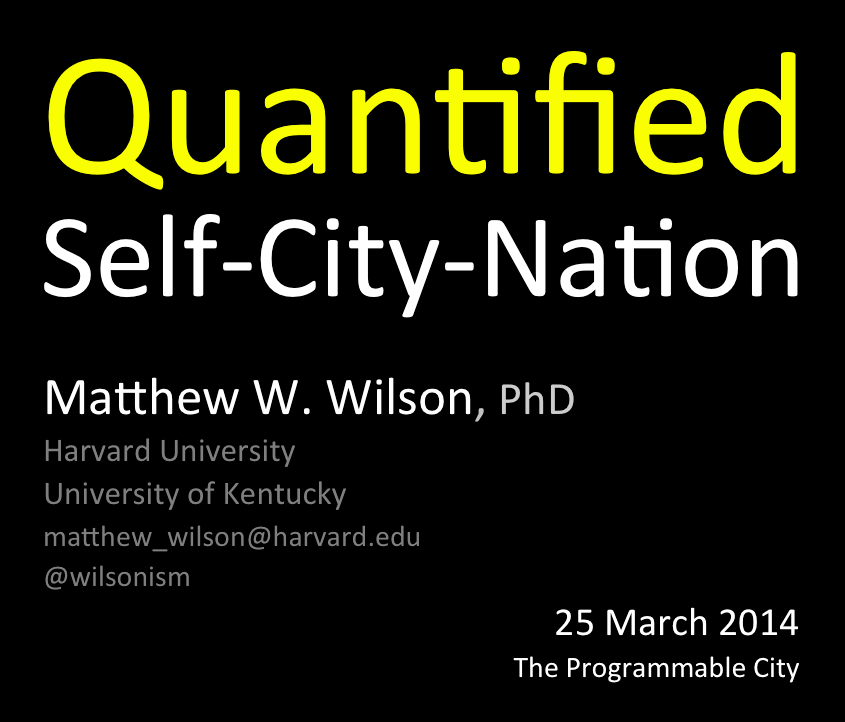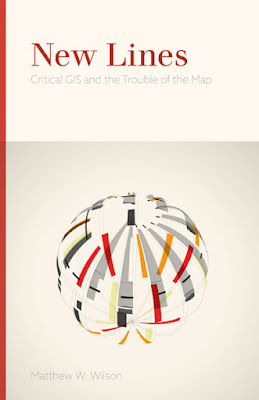Video: Quantified Self-City-Nation
The video from my lecture, 25 March 2014, at the launch for The Programmable City project at NUI Maynooth has been posted. Many thanks to Tracey and Rob and the @progcity team for hosting this event! My presentation, "Quantified Self-City-Nation", is part of a broader project I've envisioned as New Lines (see another video here and article here).
Abstract:
New devices and techniques have emerged to better quantify an individual’s movement, stasis, and even sleep, while a ‘smart city’ discourse and marketing apparatus applies these principles to analysis, representation, and management of the city. Indeed, as cities are increasingly rethought as organisms and human bodies are quantified as systems, the interactive opportunities and limitations for engagement, representation, and resistance are evermore significant. In this presentation, I draw parallels between the rising consumer-electronic sector associated with personal activity monitors and the rapid visioning of smart urbanism. More specifically, I interrogate these developments in quantification, namely: interoperability and propriety, competition and habit, fashion and surveillance. What are the social-cultural and political implications for this refiguring of spatial thought and action? What capacities are reinforced and developed through the implementation of these technologies and techniques? I address these concerns, through discussion of a continuum of technologies that serve to open and close multi-scalar systems of attention control.
Abstract:
New devices and techniques have emerged to better quantify an individual’s movement, stasis, and even sleep, while a ‘smart city’ discourse and marketing apparatus applies these principles to analysis, representation, and management of the city. Indeed, as cities are increasingly rethought as organisms and human bodies are quantified as systems, the interactive opportunities and limitations for engagement, representation, and resistance are evermore significant. In this presentation, I draw parallels between the rising consumer-electronic sector associated with personal activity monitors and the rapid visioning of smart urbanism. More specifically, I interrogate these developments in quantification, namely: interoperability and propriety, competition and habit, fashion and surveillance. What are the social-cultural and political implications for this refiguring of spatial thought and action? What capacities are reinforced and developed through the implementation of these technologies and techniques? I address these concerns, through discussion of a continuum of technologies that serve to open and close multi-scalar systems of attention control.



Comments
Post a Comment